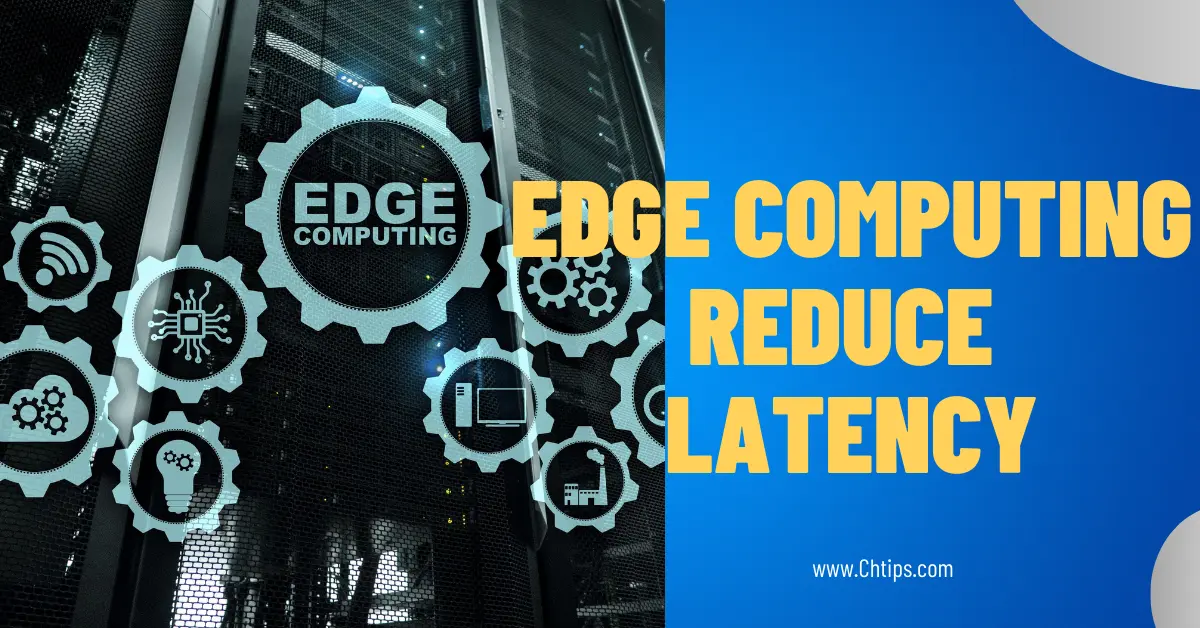Introduction To Edge Computing Reduce Latency for End Users
Edge Computing is distributed computing capable of bringing all the computational and data storage devices together or nearby so that the distance between location and data generation is reduced considerably.
This eventually reduces Latency and enhances the overall performance.
In Edge computing, the computing resources are used and utilized, such as servers, storage, and network devices at the network’s edge.
The data and information are transferred to a closer distance; hence, bandwidth and storage consumption are reduced because of data encryption.
The data encryption provides an additional layer of security. We will learn How Edge Computing reduces Latency for End Users with examples in the article.
What is Edge Computing?
Edge computing’s ability to bring computation closer to the data source enables faster processing, real-time decision-making, and reduced Latency, making it a valuable technology in numerous industries and applications.
Cloud Computing consumes more data storage, and bandwidth is expensive.
Cloud computing needs costly hardware and resources, so companies opt for edge computing over cloud computing.
Various significant features and characteristics of edge computing have made them more popular.
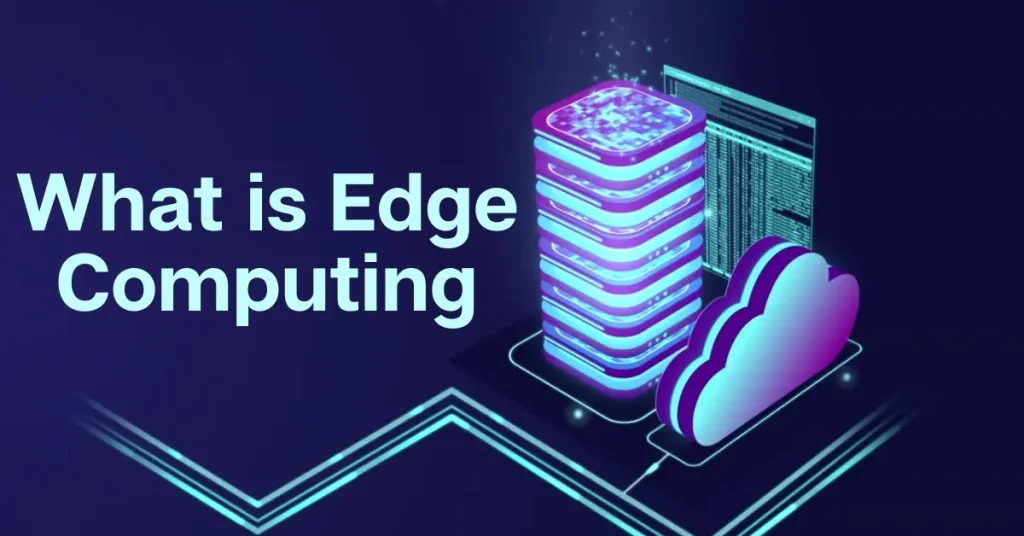
Some of such features are included.
- Edge Computing is capable of working with real-time applications.
- The data handling and accessing speed is considerably faster compared to cloud computing.
- Edge computing use and utilizes data processing.
- The data and information are encrypted, providing an additional security layer.
- Edge computing decreases Latency, and the internet speed is increased dramatically.
- Machine Learning [ML] and Artificial Intelligence [AI] are used to build modern and upgraded Edge Computing.
How Does Edge Computing Reduce Latency for End Users?
Edge Computing stands for (Enhanced Data Rates for GSM Architecture). Edge Computing is a combination of two words, Edge and Computing.
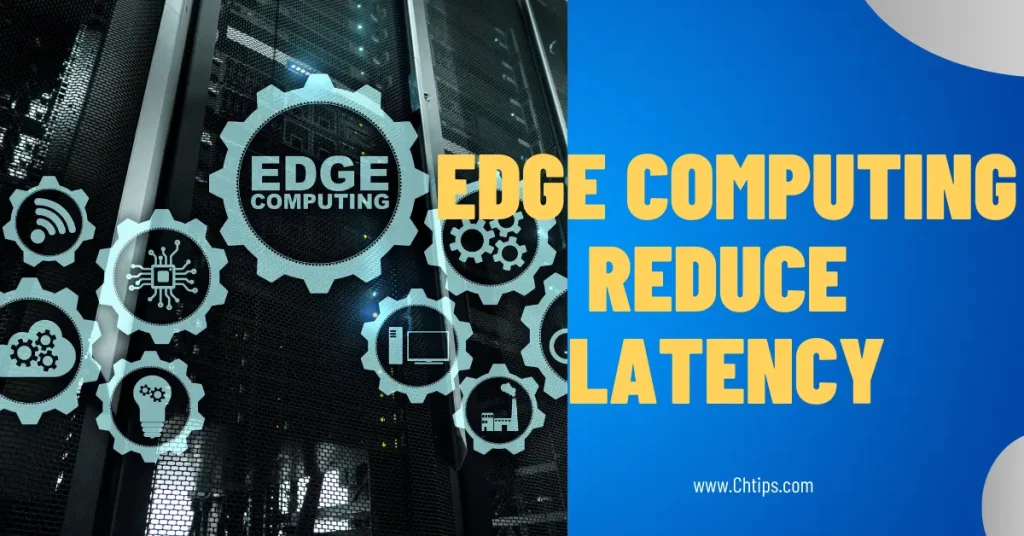
Edge Computing is a technique or method that allows or brings data and information nearer to the source of data generation, primarily stored at the network’s edge.
The resources and devices placed nearer or closer to the devices that generate data, hence edge computing, can significantly reduce Latency for end users.
Edge Computing is primarily and extensively used for the organization of data | and information for the Internet of Things [IOT].
Top 5 Reasons How Does Edge Computing Reduce Latency for End Users are Listed Below.
- Proximity to the Data Source.
- Local Processing and Decision-Making.
- Reduced Network Congestion.
- Real-Time Data Processing.
- Bandwidth Optimization.
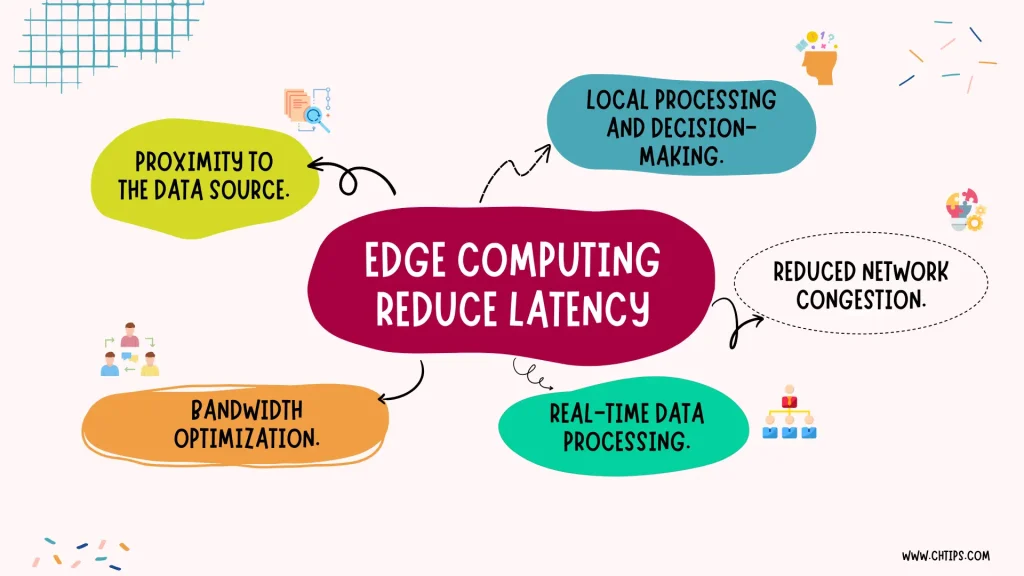
1. Proximity to the Data Source.
Edge Computing is specialized with significant features and characteristics as they tend to keep computing devices, storage devices, data centers, and servers closer to the devices that generate data and information.
The data and information access time required is considerably faster than other technology as the physical distance between the two ends is lesser.
Therefore the data transferring time is less. This results in low Latency.
In Edge Computing, the data, information, and instruction are not sent to the centralized cloud server. Instead, it is sent to nearby edge nodes that are closer.
2. Local Processing and Decision-Making.
In Edge Computing, data processing, handling, analyzing, identifying, and decision-making can be done locally without the interference of centralized data centers.
In Edge computing, all the data and information are not sent to a cloud server for handling and processing. Instead, most of the computational work can be performed locally or with the help and assistance of edge nodes.
This significantly reduces the time consumed with round-trip time for data transmission and access.
This data processing considerably enables faster response times and decreases or declines the Latency experienced by end users.
3. Reduced Network Congestion.
Edge Computing can send and receive data and information with fantastic speed. The data can be processed and handled locally with the help of edge devices and edge nodes.
The amount of data and information accessed in the network is lesser than the other networks; this reduces the Latency experienced by the user.
The data response time is faster than another network, considerably reducing congestion.
4. Real-Time Data Processing.
Edge Computing specializes in real-time data processing, analysis, and handling. The data and information can be handled and processed locally, resulting in faster and instant responses.
Therefore, Edge computing is quite popular in such applications that need or require instant results.
Such applications are as follows.
- Industrial Automation.
- Automobile Sector.
- Autonomous Driving Systems.
- Air Traffic Control Systems.
- Process Control Systems.
5. Bandwidth Optimization.
Edge Computing optimizes data and information by compressing the data, information, and instruction send over the network.
It also performs data filtering, handling, processing, computation, and aggregation operations at the network’s edge.
Edge Computing does not send all the raw data and information to the network.
Instead, it sends or transfers the processed data to the network, considerably lowering bandwidth usage.
The traffic on edge networks is managed and organized to lower bandwidth usage.
This optimization reduces the overall Latency by minimizing the data transmission requirements.
All the factors mentioned above play an essential role in significantly lower Latency for end users, which results in faster response times, improved and enhanced user experience, and better performance for real-time applications.
Edge Computing is an Extension of Which Technology
Edge Computing is an Extension of Cloud Computing.
Cloud Computing is specialized in storing, handling, and processing data | information on remote servers and data centers.
Whereas Edge Computing is primarily and extensively used in real-time applications as they store, handle, organize and process data locally or edge of the network.
This considerably increases the data speed and exchange as the data is not processed on the server.
It is done locally, resulting in low Latency, improved and enhanced bandwidth, accuracy and efficiency.
In Edge Computing, all the devices, computing resources, and services are installed near the edge devices for faster results.
Which Factors Have Made Edge Computing Cheaper and Easier
| 1 | The reduced expenses for data storage in edge computing. |
| 2 | Advanced and enhanced internet connectivity and speed in edge computing that uses more advanced communication devices and protocols like 5G and Broadband services. |
| 3 | Decreased internet latency due to increasing adoption of cloud-based platforms like Amazon and Web Services [AWS]. |
| 4 | Data-Driven Services require low latency, high bandwidth and unmatched speed. The end user requires fast network connectivity between the device and the cloud provider. |
| 5 | Edge computing allows data and information to transfer speed and accuracy between the ends without delays and packet loss at the network level. |
Useful Video: What is Edge Computing
Characteristics of Edge Computing
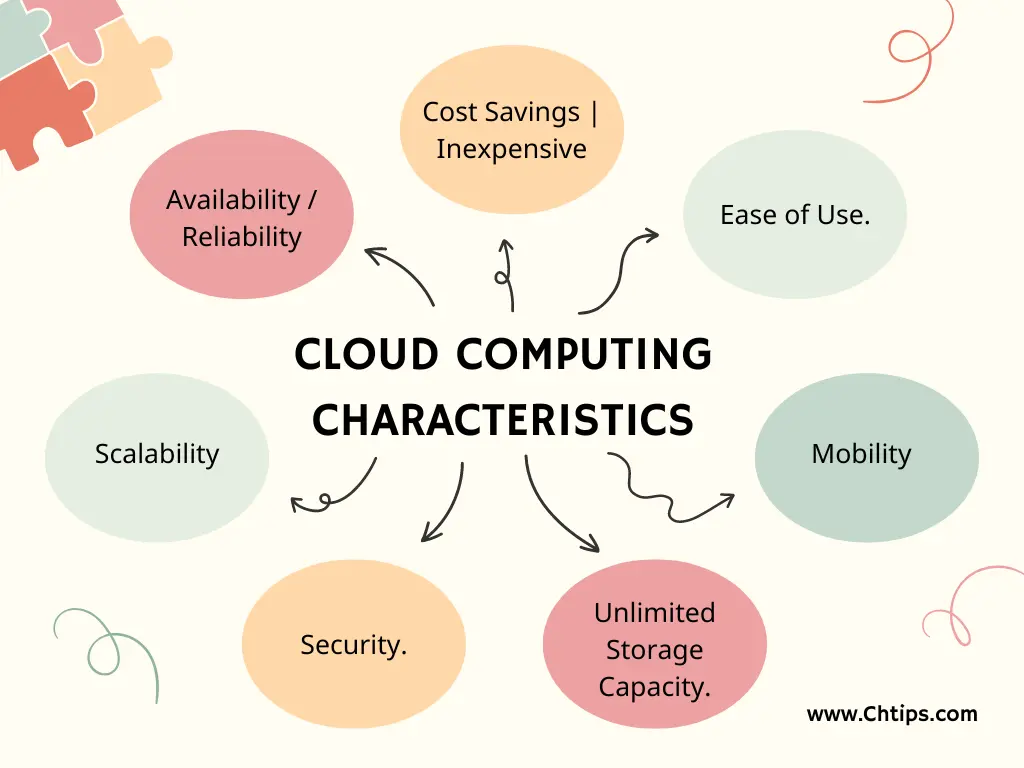
Some significant features of cloud computing are mentioned below.
- Inexpensive.
- Ease of Use.
- Availability / Reliability
- Scalability.
- Security.
- Unlimited Storage Capacity.
- Mobility.
Which Statement Describes A Characteristic of Cloud Computing
There are several characteristics of cloud computing. Some of them are inexpensive, faster data and information access, and additional security features.
- Cloud Computing is easy to use, implement and deploy.
- Cloud Computing offers an additional layer of security.
- Data and information can be accessed and operated from anywhere.
Different Types of Edge Computing
There are 4 types of edge computing.
- Internet of Things Edge.
- On-Premise Edge.
- Access Edge.
- Network Edge.
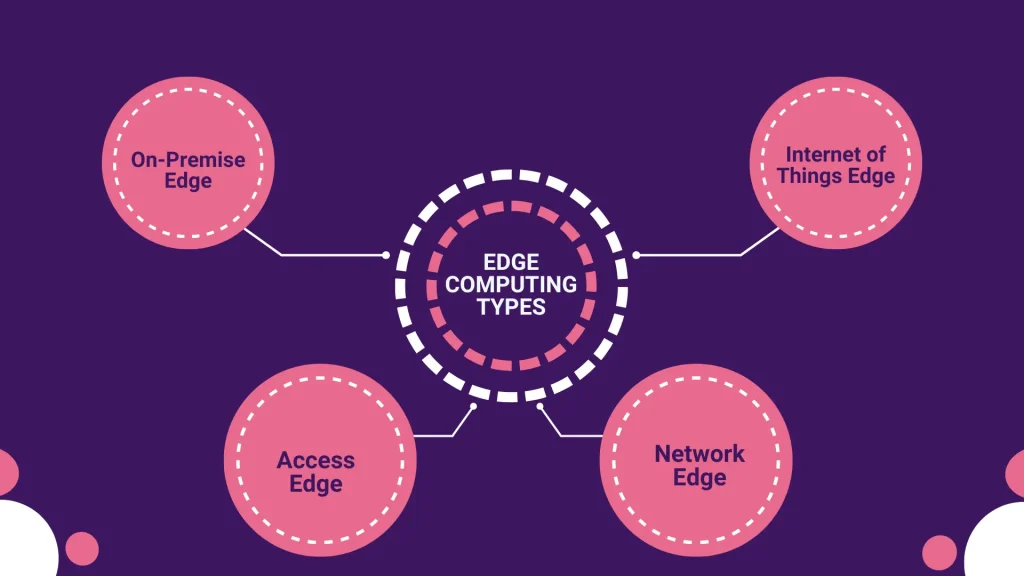
Uses of Edge Computing
There are significant uses and applications of edge computing in different industries.
Some of the critical benefits of edge computing are included below.
- Internet of Things (IoT).
- Real-time Analytics.
- Content Delivery & Optimizations.
- Edge AI.
- Industrial Automation.
- Autonomous Systems.
- Healthcare.
I have mentioned some well-known and popular edge computing uses around us. Other Edge computing uses are real-time applications, retail shops, Malls, Management and Agriculture.
What Underlying Concept Is Edge Computing Based On?
Edge Computing is based on the Underlying Concept of Distributed Computing.
Resources and tasks are distributed across the cloud network in Distributed Computing devices. They do not rely upon a centralized network.
In an edge network, the resources are closer to the network, so the data and information are accessed more efficiently than in other networks.
Edge computing reduces data latency, enhances and improves performance, and possesses capabilities for real-time processing.
Advantages and Disadvantages of Edge Computing in Comparison Table
| # | Advantages | Disadvantages |
| 1 | Edge computing is inexpensive compared to cloud computing. | Edge computing requires energy as many devices are attached for data processing and handling. |
| 2 | Edge computing operates faster than its counterparts, requiring less operation and data processing time. | Edge computing is less reliable than cloud computing. |
| 3 | Edge computing can process data and information with incredible speed that helps and assist users in real-time applications. | Edge devices control the data. |
| 4 | 5G technology will help the use of edge computing more profoundly. | The data security is questionable. |
| 5 | Edge computing is used in self-driving cars, automated systems, self-driving cars, robots, drones, etc. | Edge devices govern sensitive data and information, which can be a security issue. |
How Does Beamforming Improve Network Service
Beamforming is an advanced and enhanced technology used and utilized in wireless communications that can considerably improve network services.
Some of such are included below.
- Increased Range.
- Better Signal Quality.
- Reduced Interference.
- Higher Capacity.
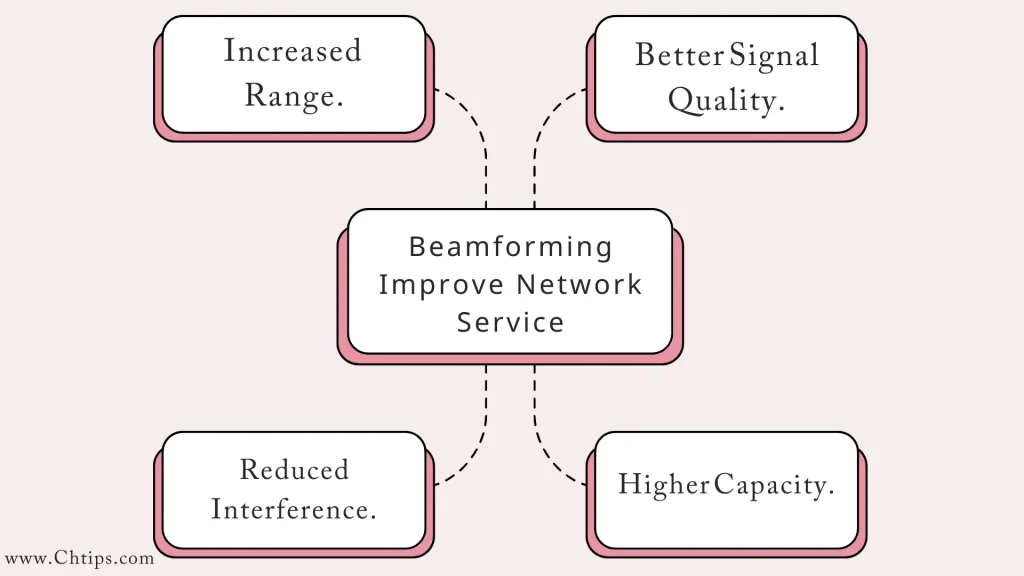
1. Increased Range.
Beamforming can provide good signal coverage with greeter connectivity so that all devices can connect quickly and conveniently.
2. Better Signal Quality.
Beamforming sends wireless signals to a specific target resulting in stronger signals and coverage. This improves the overall performance and experience.
The data and information can be transferred quickly and accurately with minimal packet loss.
3. Reduced Interference.
The previous or old fashion networks tend to lose signals due to obstacles such as walls or buildings. This obstacle leads to a loss of connectivity and coverage.
Beamforming technology eliminates such issues by providing more advanced and enhanced technology for more uniform and standard usage.
Beamforming stops unwanted signals from interfering with the network, improving the overall experience.
4. Higher Capacity.
This Beamforming Technology can considerably improve the coverage and signal strength of the network without disturbance.
This can improve the network service by allowing more devices to connect and communicate with each other simultaneously.
Beamforming improves network service by providing a more efficient, reliable, and fast wireless connection.
How Does Lower Latency Benefit the Users Connected to a Network
Lower Latency benefits the users connected to a network in several ways:
- Improved Responsiveness.
- Better User Experience.
- Faster Downloads and Uploads.
- More Reliable Connectivity.
Examples of Edge Computing
- Autonomous Vehicles.
- 5G Connectivity.
- Artificial Intelligence.
- Healthcare.
- Telecommunications.
- Retail and E-Commerce.
- Autonomous Vehicles.
- Industrial Internet of Things (IIoT).
- Smart Cities.
- Fleet Management.
- Predictive Maintenance.
- Voice Assistant.
- Streaming Services.
Recommended Reading
- Which Statement Describes A Characteristic of Cloud Computing
- Top 10+ Pros and Cons of Digital Transformation and Workplace
- 6+ Different Types of Records Management Software
- Which Factors Have Made Edge Computing Cheaper and Easier?
- How Can Edge Computing be Used to Improve Sustainability
- What is Integrated Document Management System | 4 Types , Components and Examples
- Computer Basic Tutorials
Edge Computing Reduces Latency for End Users PDF Download
Top Edge Computing Companies
- AMD & Super Micro Performance Intensive Computing.
- Dell Enterprise Tech Provider.
- Hitachi Hybrid Cloud Solutions.
- HPE Zone.
- Inclusive Leadership Network.
- IoT Integrator.
- Lenovo 360.
Frequently Asked Questions [FAQs] Edge Computing
What is another name for edge computing?
Fog Computing.
Which algorithm is used in edge computing?
Edge Computing-Based ERBS Time Synchronization Algorithm in WSNs.
What is the full form of edge?
Enhanced Data rates for GSM Evolution (EDGE).
What are the 3 dots called on the edge?
Ellipsis button.
What is 5 edge called?
Pentagon has 5 edges.
What is the 3 line menu icon called?
Hamburger button.
Get in Touch
I have also written and compiled some articles on computers and telecommunications, and please go through them.
I hope you will like reading it.
All the questions and queries related to the How Does Edge Computing Reduce Latency for End Users You Never Knew have been answered here.
If you have any questions related to Edge Computing Reduce Latency.
Don’t hesitate to contact me, and if you need to add, remove, or update anything from the article, please let me know in the comment section or via email.
I will be more than happy to update the article. I am always ready to correct myself.
I would like you to share this article with your friends and colleagues; this motivates me to write more on related topics.
!!! Thank You !!!
